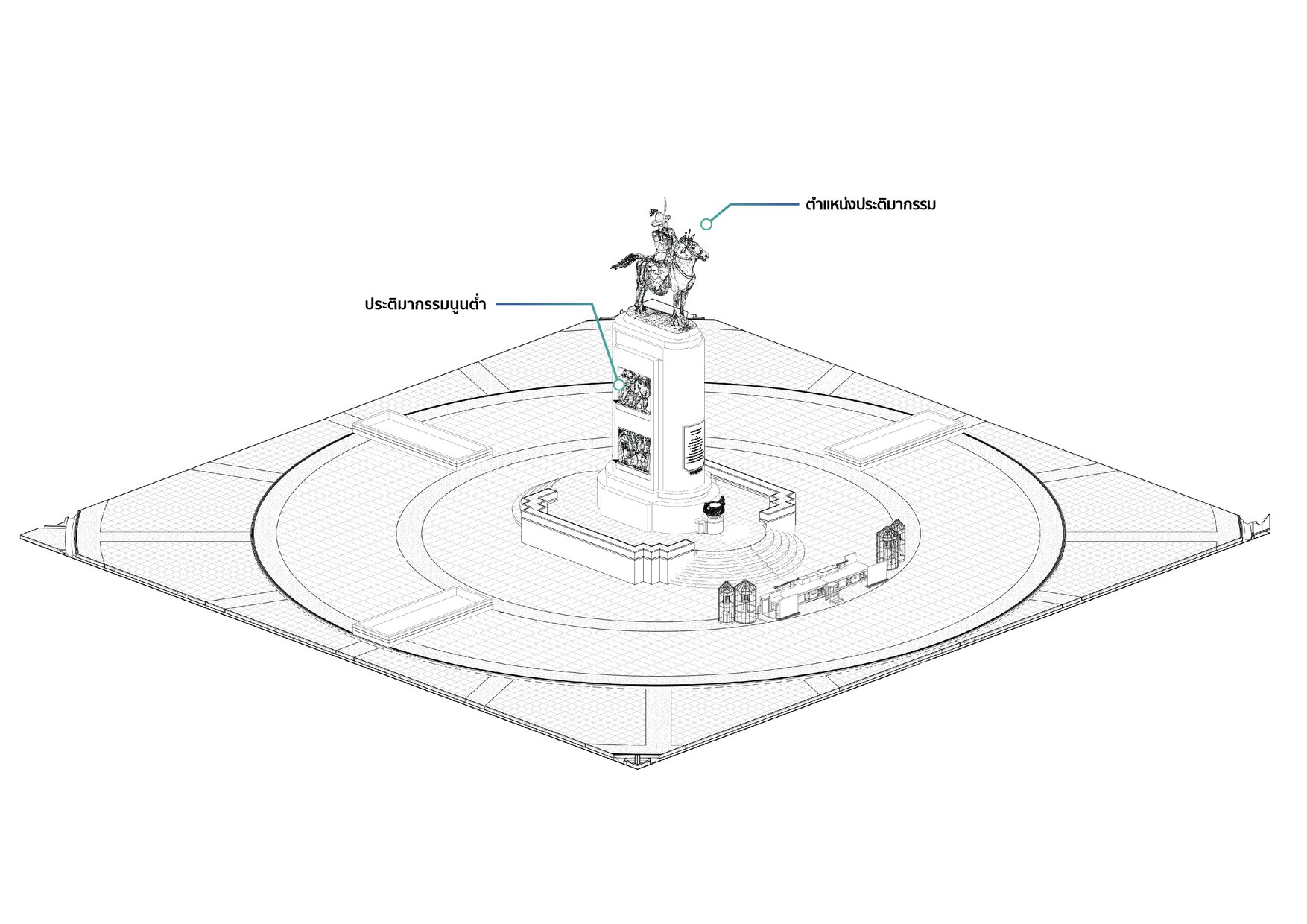In 1934, Thongyu Puttapat, a member of the House of Representatives of Thonburi province, called a meeting with representatives of the province’s subdistricts to discuss a plan to build a monument to King Taksin the Great in the centre of Wongwianyai traffic circle. The plan was approved and a letter requesting the administration of Phraya Phahonphonphayuhasena to implement the plan was submitted. However, the government made no response to the request.
In early 1935, a committee was set up to initiate the construction of the King Taksin Monument with Thongyu Puttapat as its chairman. The committee asked Prince Aditaya Dibabha to join the project. The Prince suggested that the statue of King Taksin should portray the image of a warrior and that the committee should create a small replica and submit their plan to Prince Narisara Nuwattiwong.
In July 1935 Prime Minister Phraya Phahonphonphayuhasena proposed a detailed plan for the King Taksin Monument to Cabinet. Cabinet passed a resolution to set up a committee to supervise the project. The committee ordered the Fine Arts Department to create seven small versions of proposed King Taksin monuments to be displayed at the Constitution Celebration in 1937. The public voted for their favourite by putting money in a donation box in front of each design. The result was decided by the total number of coins donated for each design, not by the total value of the coins.
The first design won the popular vote with a total of 3,932 votes. The first design had a rectangular base with rounded ends. Each side of the base featured three wooden boards. On top of the base stood the statue of King Taksin on a horse. The left and right sides of the base featured two pictures of soldiers placed one above the other. The upper picture did not have any frame while the lower picture had a three-sided frame. In front of the statue was a set of stairs.
Construction was halted due to World War II and political conflicts in the country, and resumed in 1954 when Thongyu Puttapat and Pethai Chotinuchit, members of Thonburi Municipal Council, revived the project. Field Marshal Plaek Phibunsongkhram, the Prime Minister at the time, the House of Representatives and the Cabinet approved a Bt200,000 budget for the monument construction. Cabinet set up a new committee to supervise the project.
On 22 March 1950, the committee passed a resolution to build the King Taksin Monument in the centre of Wongwianyai traffic circle as the previous committee had approved. Construction of the statue, base and other components was delegated to the Fine Arts Department. Professor Silpa Bhirasri, Dean of the Faculty of Painting and Sculpture, Silpakorn University, designed the statue. The molding was completed in August 1951. The casting of the statue’s head was done in November the same year while the statue casting was completed two years later.
On 17 April 1954, at the invitation of the committee supervising the monument construction, King Bhumibol presided over the opening ceremony. Two days and two nights of celebration were held for the opening ceremony.



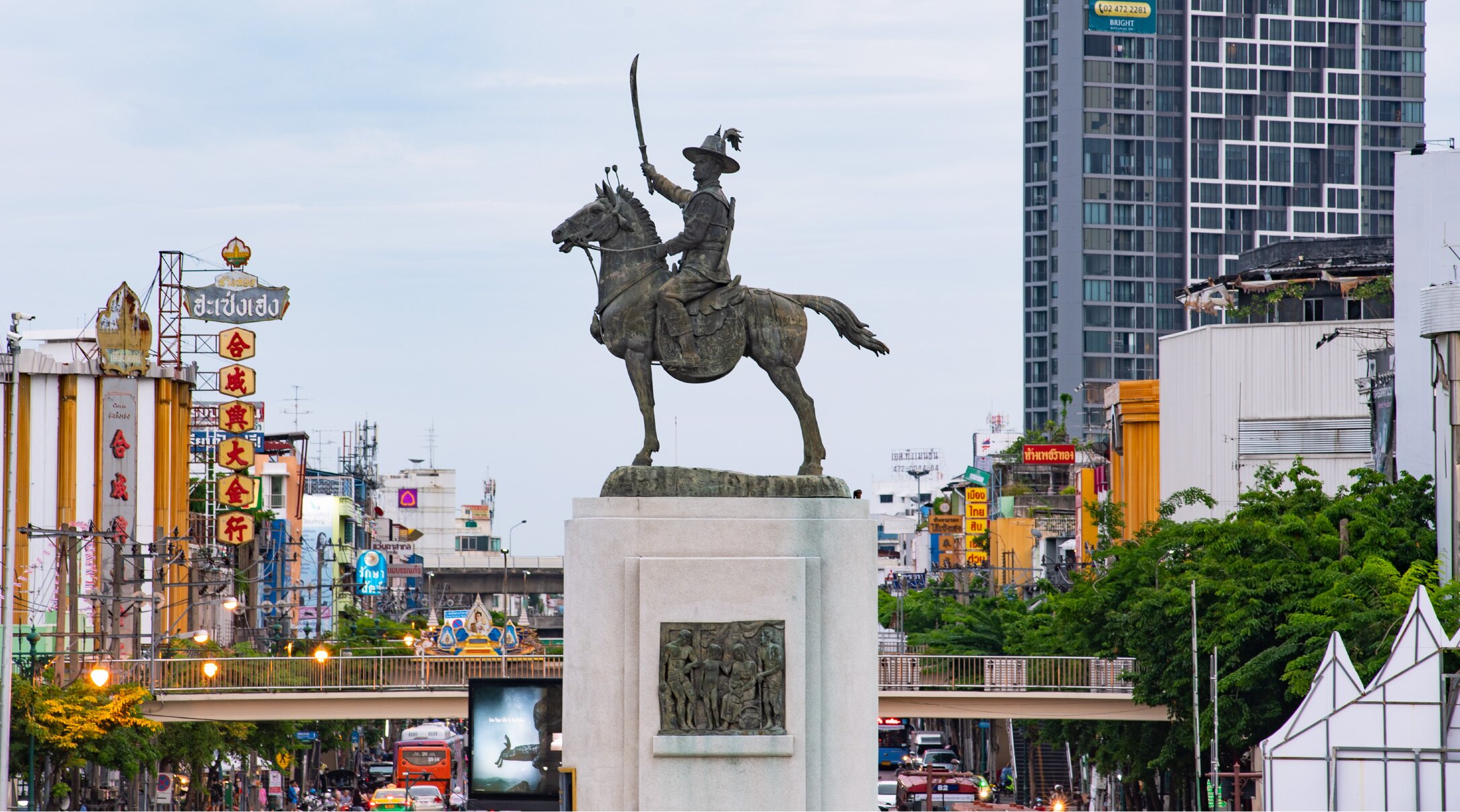
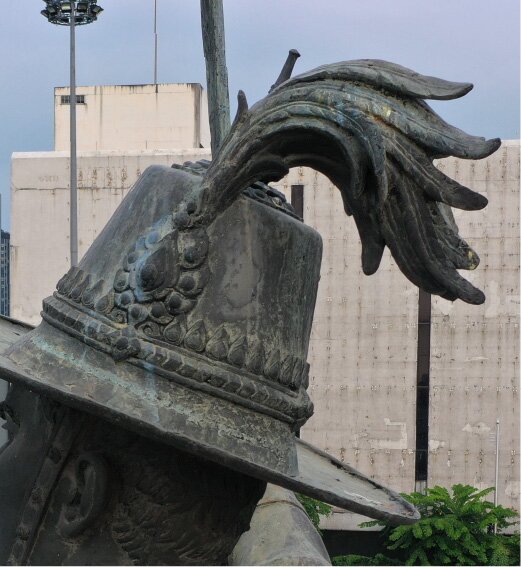

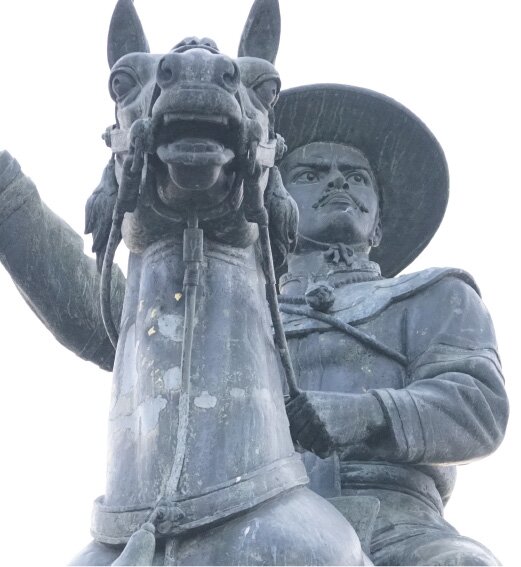
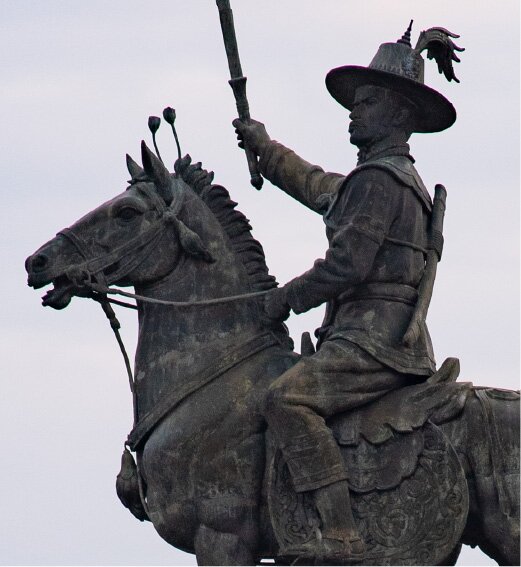
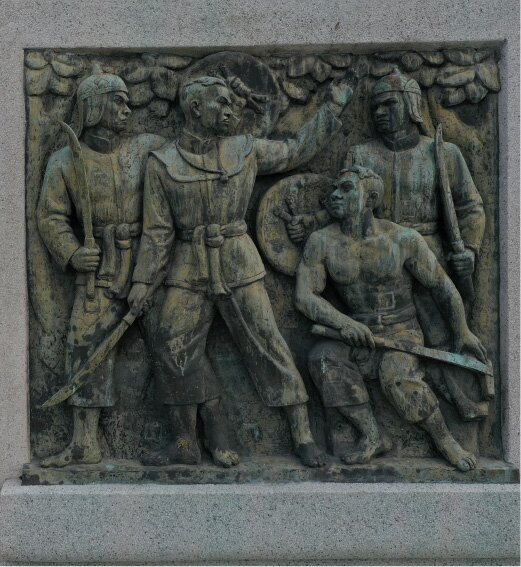
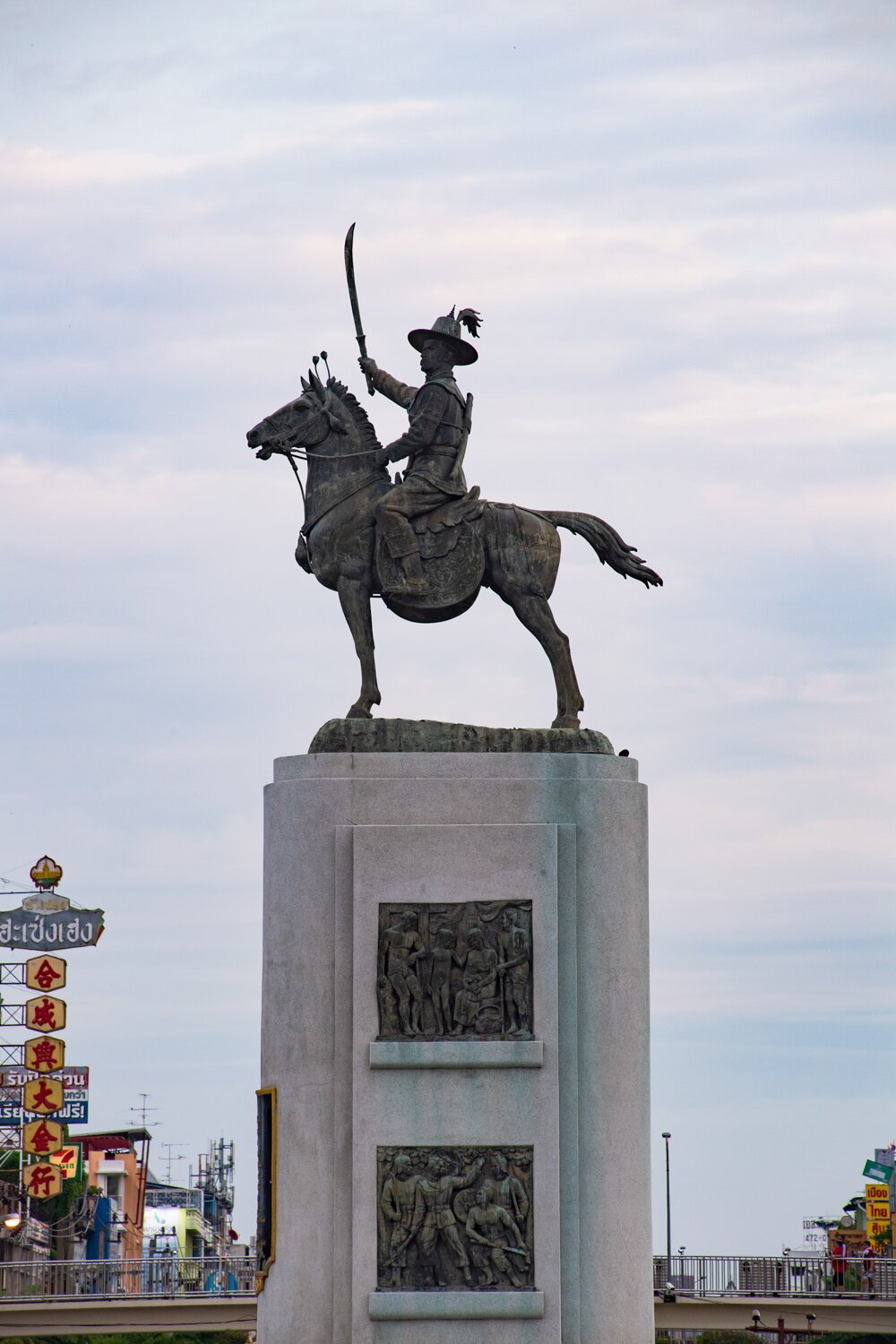
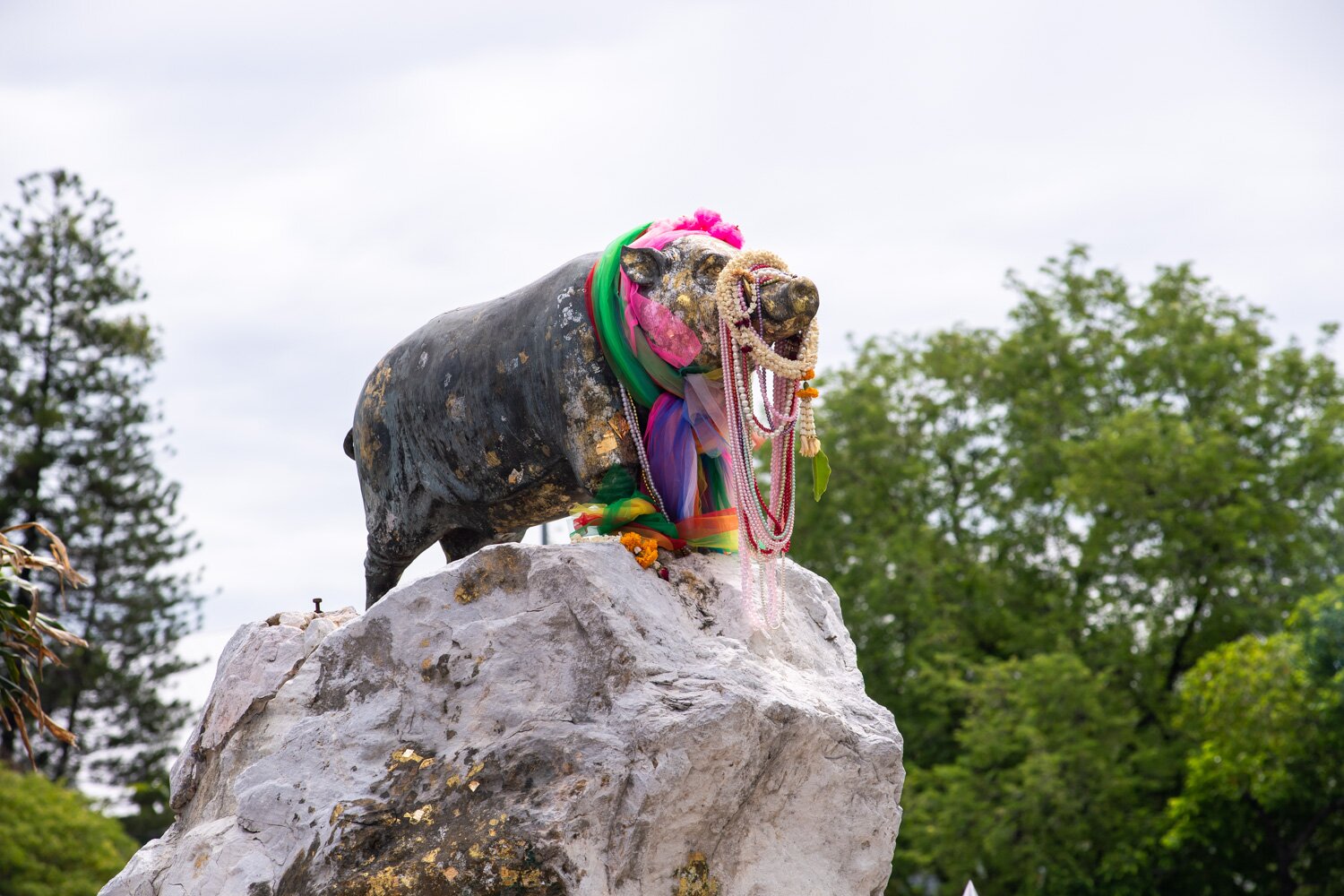
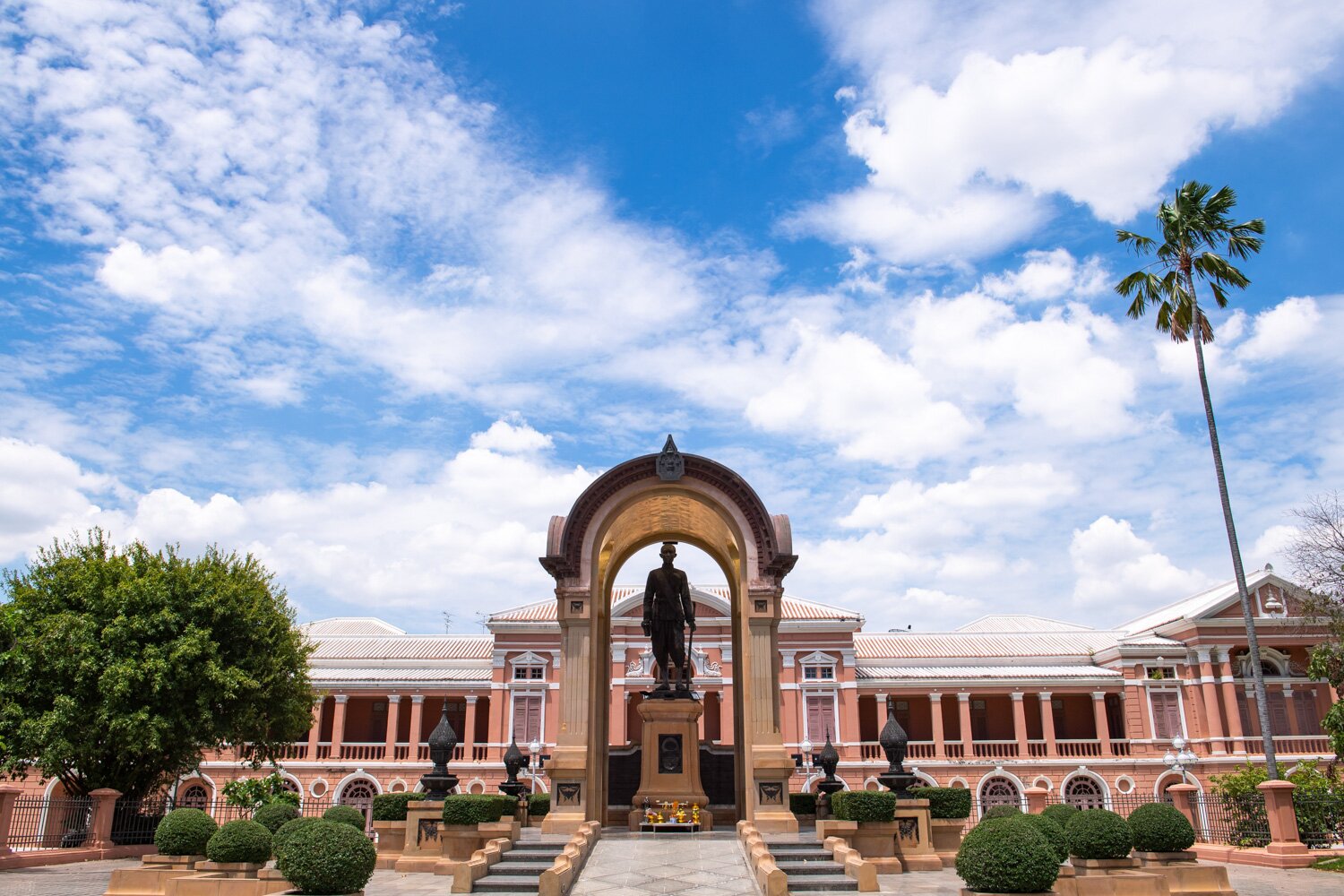
.jpg)
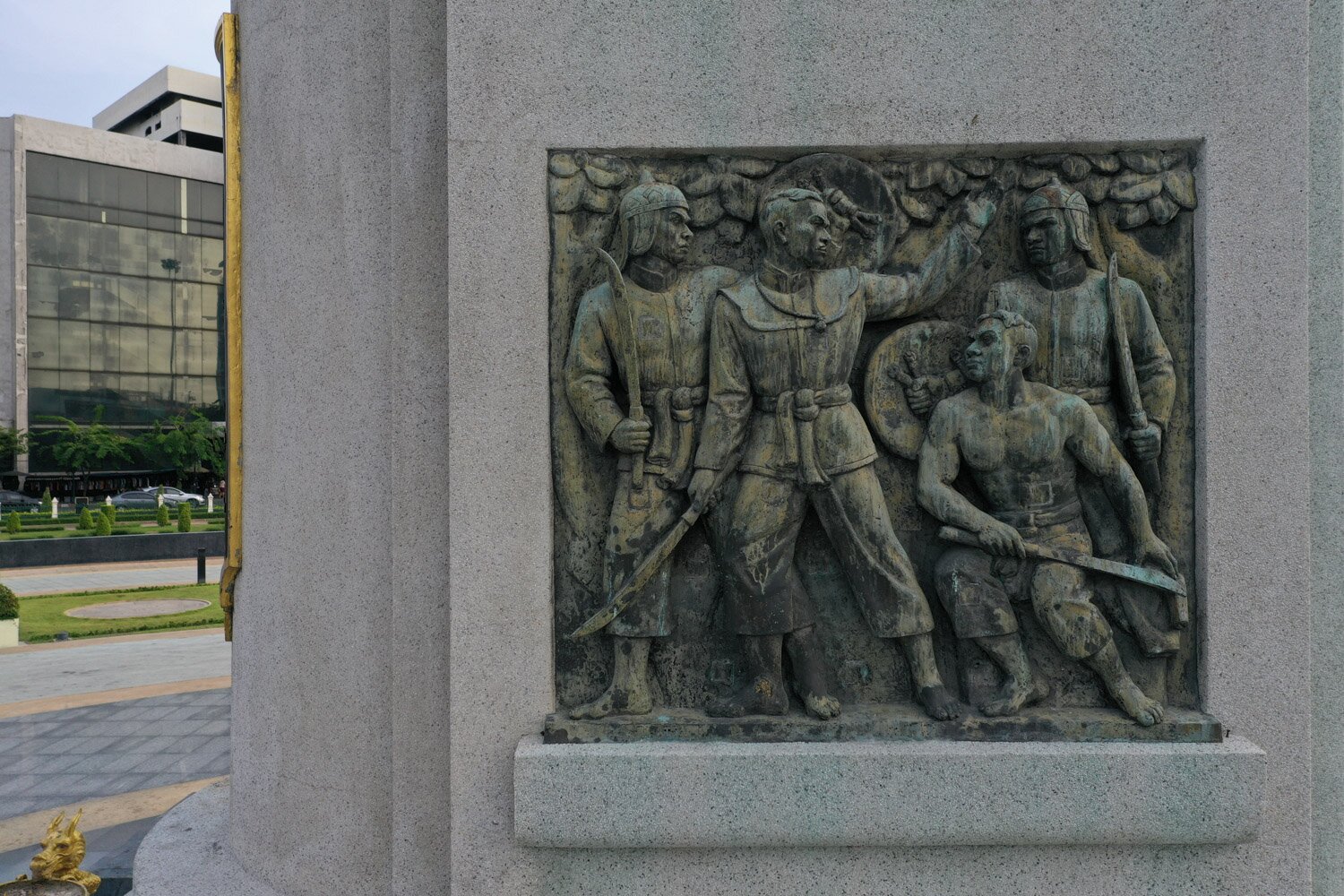
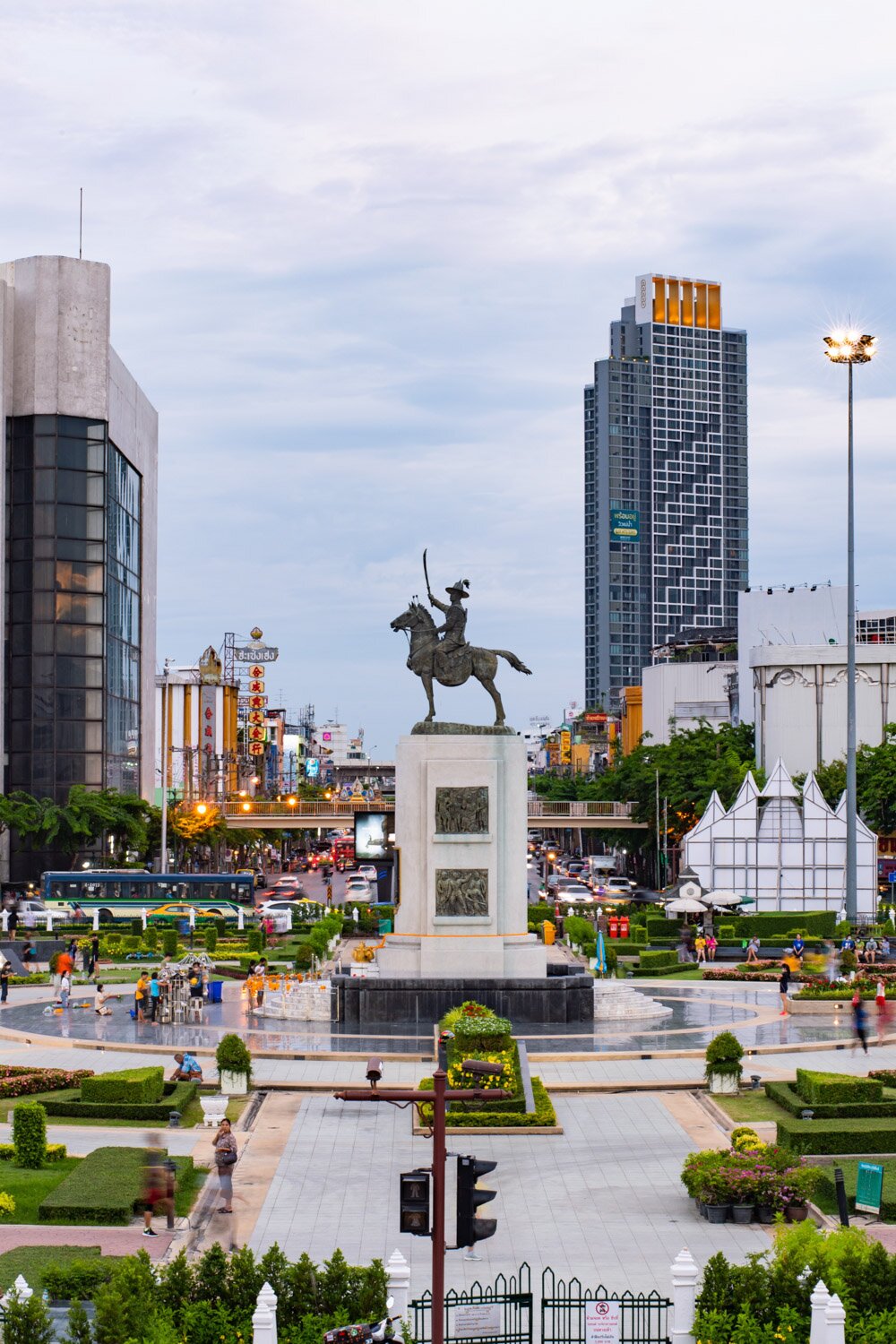

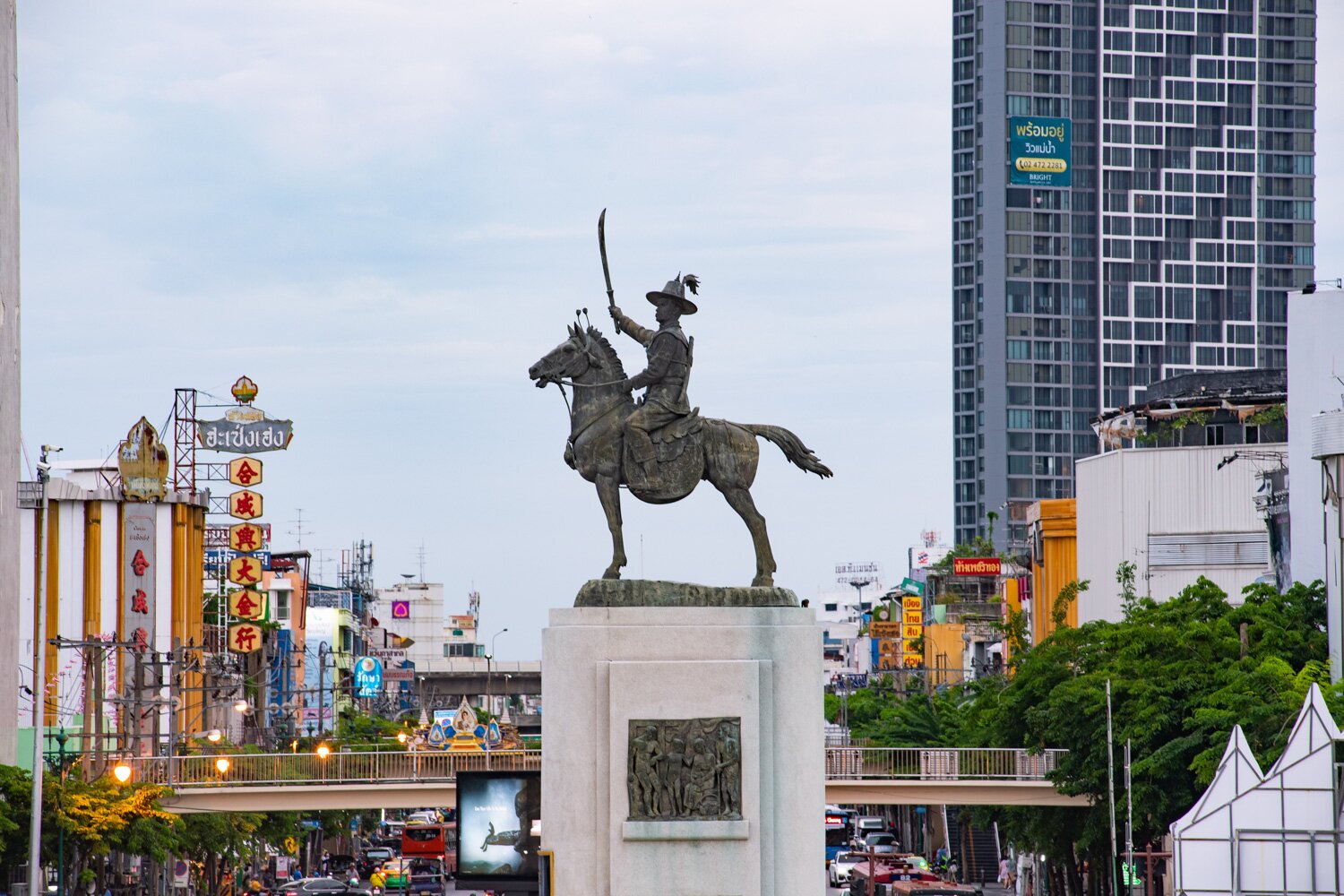
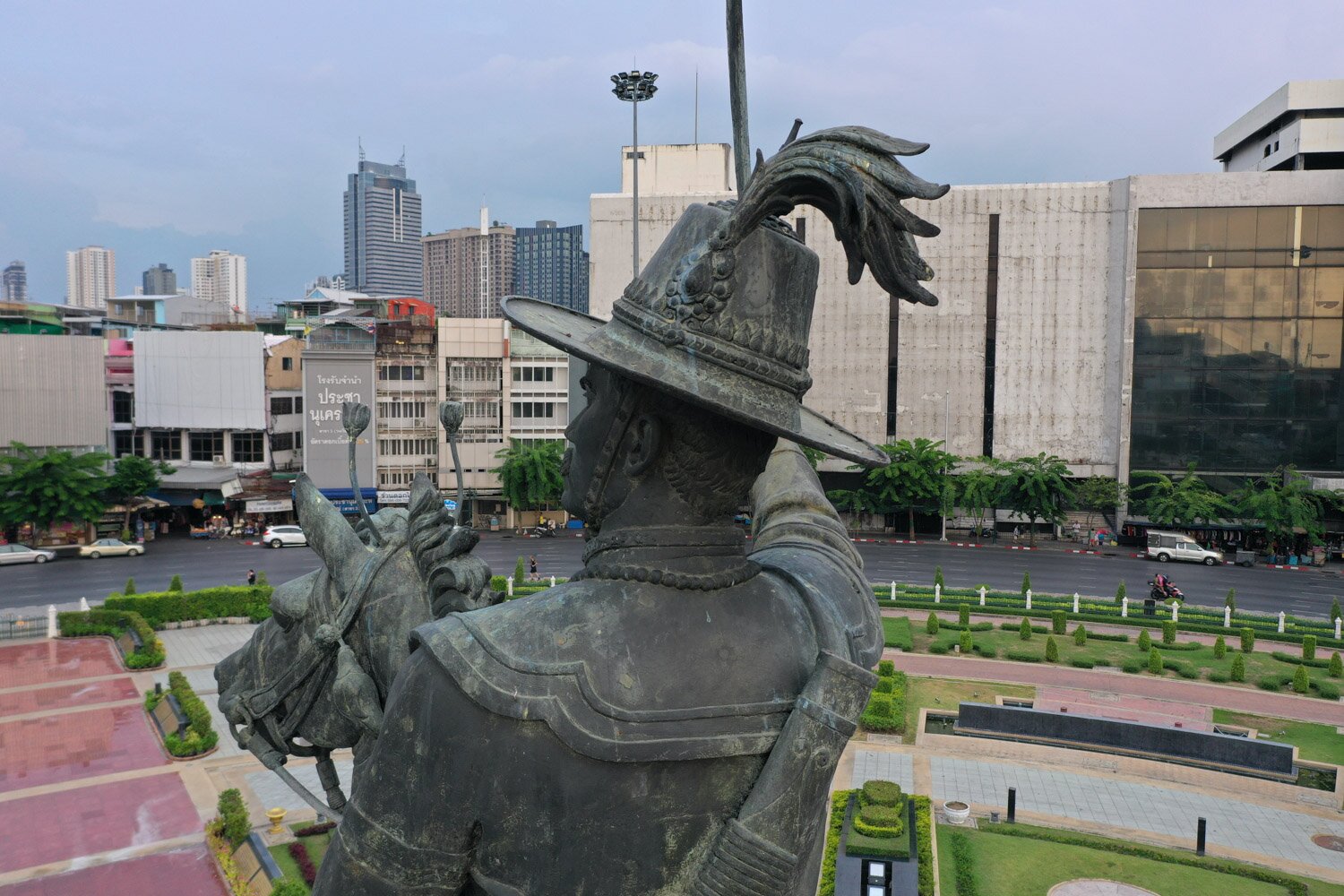

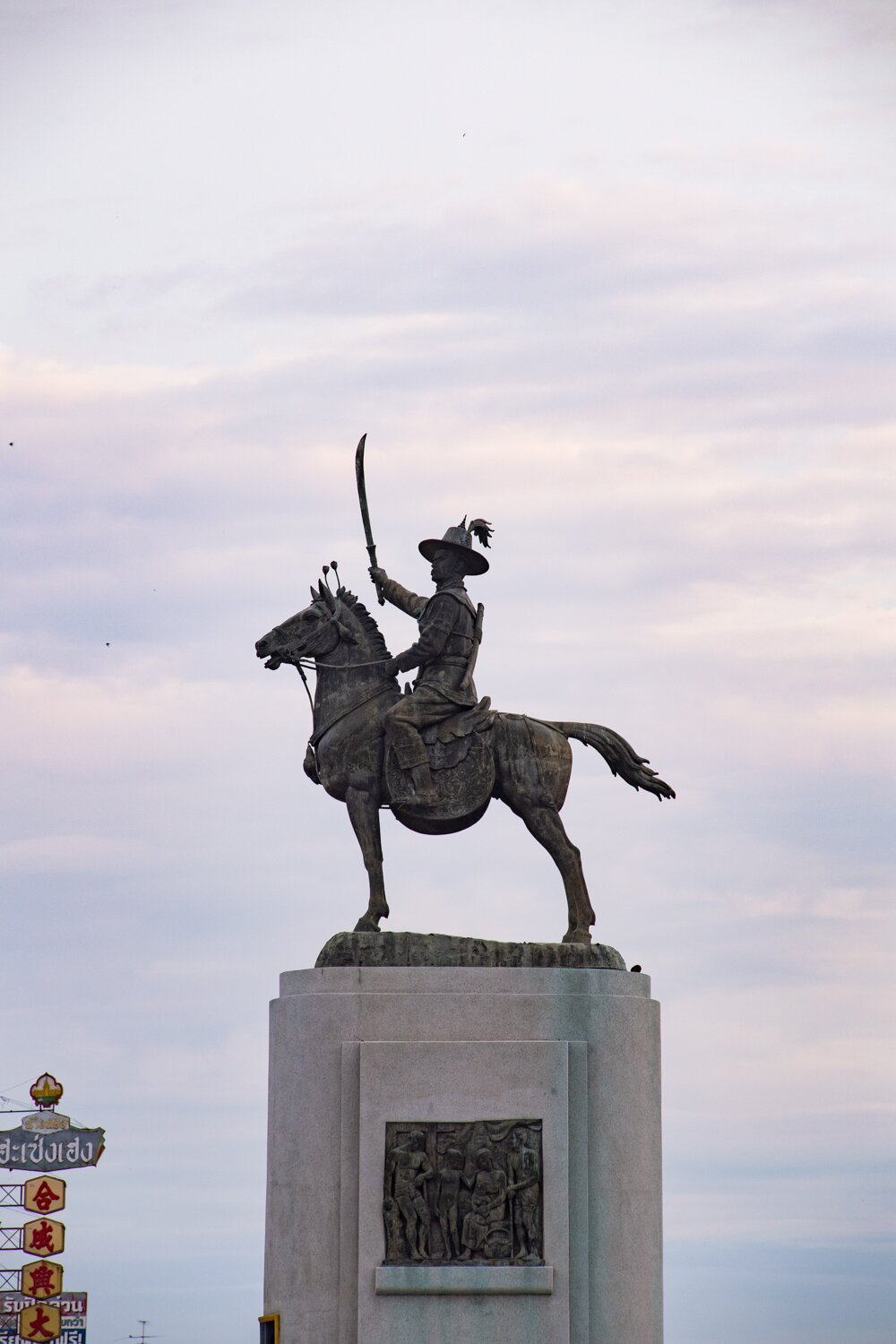

.jpg)
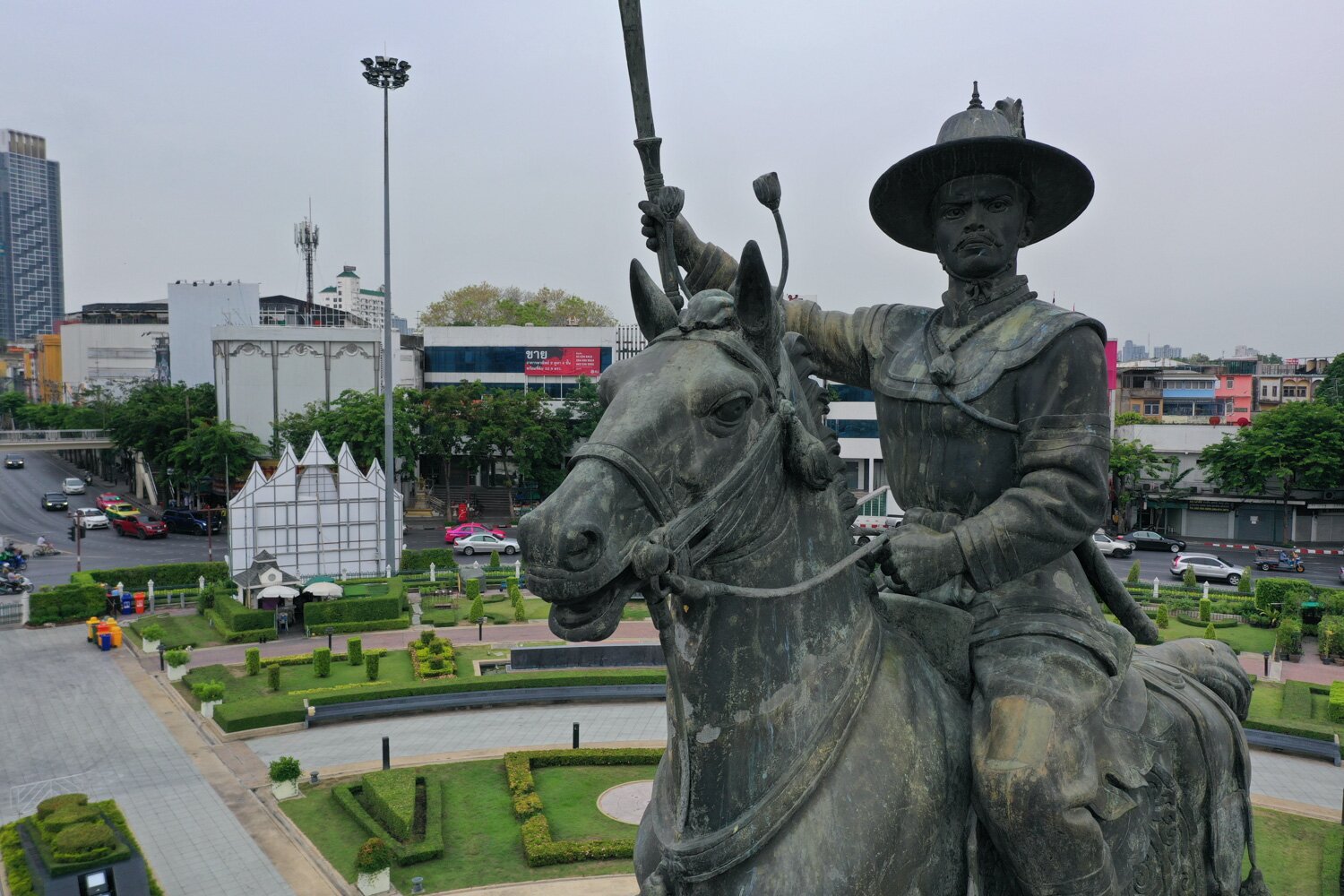
.jpg)



